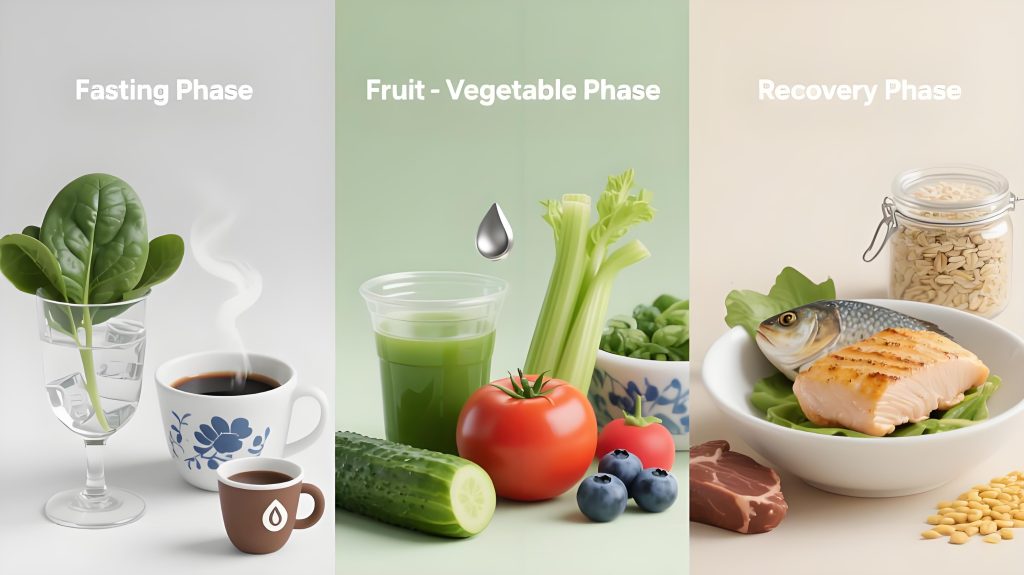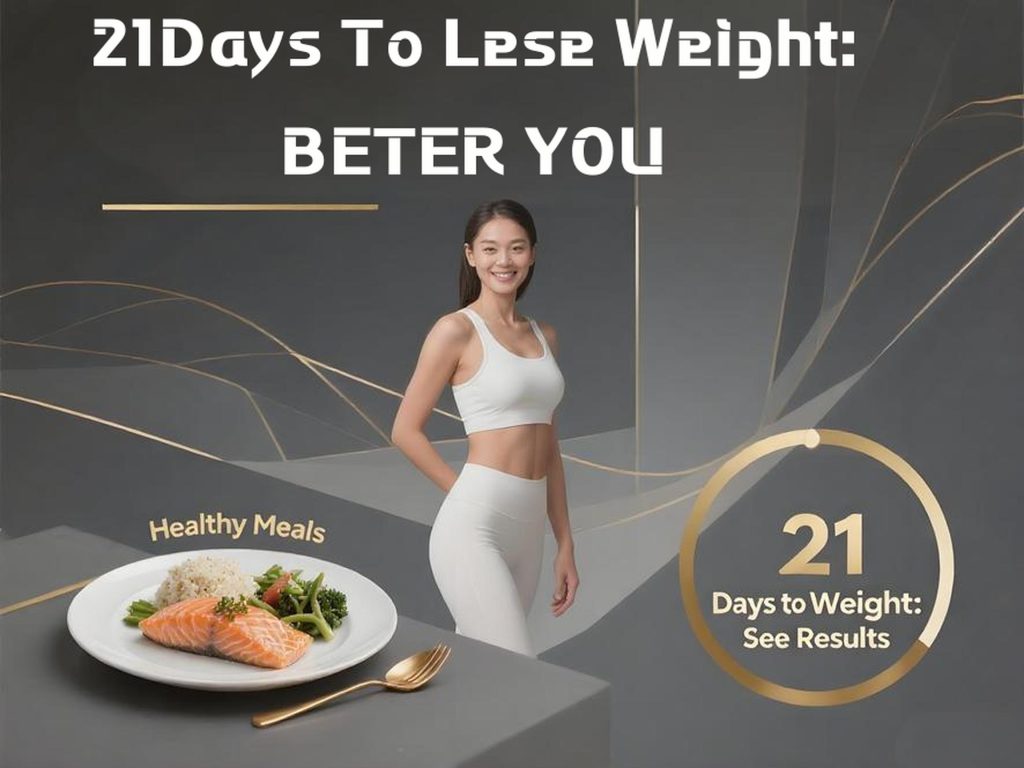21-Day Diet Plan: A Complete Guide to Food Selection and Daily Meal Templates
🔥 A “Quick Fix” to Lose 10 Pounds in 3 Weeks? First, Understand How to Eat in These 3 Stages
Got a best friend’s wedding in 3 weeks and want to fit into that tucked-away dress? The 21-day diet plan is often hailed as a “quick weight loss lifesaver,” but I’ve seen too many people either faint from hunger during the fasting phase or gain 5 pounds back within a week after resuming normal eating. The problem isn’t the method itself—it’s choosing the wrong foods and messy meal planning.
As a nutritionist who’s customized emergency plans for over 100 people, I’m breaking down the core of this extreme weight loss method today: a 3-stage food list + daily meal templates. I’ll tell you what you can eat, what to avoid, and most importantly—how to eat to minimize health risks.
I. First, Understand: Why Is the 21-Day Diet Plan “Extreme”?
The 21-day diet plan is essentially “phased extreme calorie restriction,” which forces the body to lose weight quickly by gradually reducing calories over 3 stages (note: 70% of initial weight loss is water and muscle, not pure fat).
- Core logic: Create a huge calorie deficit by “fasting to drain water,” “replacing meals with fruits and vegetables to control calories,” and “gradually adding nutrients.”
- Extreme aspects: Daily calories are only 1/3 to 1/2 of normal needs, and nutrition is severely unbalanced (lacking protein, essential fats, etc.).
- Suitable scenarios: Only recommended for “short-term emergencies” (e.g., rapid weight loss before surgery, important events), not for long-term use.
💡 Let’s be honest: Losing weight requires sacrifice. It’s not that easy to lose weight effortlessly. It’s not impossible, but every diet method has its suitable crowds. For example, if you’re getting married or going on a blind date soon—with only 10 to 15 days left—and you ask me for a weight loss method that’s healthy, effortless, and hunger-free? I think that’s hard to achieve. Of course, it also depends on your personal constitution. You can send me your situation, and I’ll analyze it for you for free.
II. 3-Stage Food List: What to Eat and What to Avoid

📅 Stage 1 (Days 1-3): Fasting Detox Phase—Only Drink These, No Solids
Core goal: Empty the intestines, consume liver glycogen (accompanied by significant water loss) to pave the way for subsequent stages.
- Allowed:
- Liquids: Pure water (2-3L daily) 💧, black coffee (no sugar, no milk) ☕, green/black tea (no sugar) 🍵.
- Special permission: 1 cup of homemade vegetable juice daily (celery + cucumber, no pulp, no sugar) 🥤.
- Absolutely forbidden:
- All solid foods (even a leaf of lettuce) ❌, sugary drinks (including honey water, fruit juice) ❌, milk/soy milk ❌.
Warning: Don’t replace with “bulletproof coffee”! Adding butter/coconut oil breaks the calorie limit during fasting and may cause diarrhea.
📅 Stage 2 (Days 4-11): Fruit and Vegetable Meal Replacement Phase—Only Eat These “Greens”
Core goal: Maintain basic metabolism with extremely low calories (500-800 kcal/day) while supplementing small amounts of vitamins.
- Allowed (raw or boiled, no oil or salt):
- Vegetables (unlimited): Leafy greens (spinach, lettuce) 🥬, cucumber 🥒, tomato 🍅, celery, broccoli 🥦 (non-starchy).
- Fruits (no more than 200g daily): Apple (with skin) 🍎, grapefruit 🍊, strawberry 🍓, blueberry (low-sugar, high-fiber).
- Absolutely forbidden:
- Staples (rice, noodles, sweet potato) ❌, meat ❌, eggs ❌, any oil (including olive oil) ❌, seasonings like salt/soy sauce ❌.
Tips for choosing foods: Pick “high-volume, low-calorie” options—for example, 100g of cucumber has only 16 kcal and can be chewed for a sense of fullness; 100g of mango has 53 kcal and spikes blood sugar, making you hungry faster.
📅 Stage 3 (Days 12-21): Gradual Recovery Phase—Add These “Nutrients” in Small Amounts
Core goal: Slowly introduce protein and whole grains to avoid rapid weight gain after resuming normal eating.
- Allowed (strict portion control):
- Protein (no more than 100g daily): Boiled chicken breast (palm-sized) 🍗, steamed fish (palm-sized) 🐟, egg whites (2).
- Whole grains (no more than 50g daily): Oats (1 spoon) 🌾, brown rice (half a small bowl) 🍚, corn (half a cob) 🌽.
- Continue eating fruits and vegetables from Stage 2 (add 1 new vegetable daily, such as asparagus or bitter melon).
- Absolutely forbidden:
- Red meat (pork, beef, lamb) ❌, processed meat (sausage) ❌, fried food ❌, cake/milk tea (even “low-sugar” versions) ❌.
Key principle: Introduce new foods “one at a time”—for example, add chicken breast on Day 12, then oats on Day 14 to avoid gastrointestinal discomfort.

III. Daily Meal Templates: Follow These to Avoid Mistakes
| Time Slot | Stage 1 (Fasting) | Stage 2 (Fruit & Vegetable) | Stage 3 (Recovery) |
|---|---|---|---|
| 7:30-8:00 | 300ml warm water (sipped slowly) 💧 | Boiled spinach (large plate, no oil/salt) 🥬 | 1 spoon oats (soaked in warm water) + 2 egg whites 🌾 |
| 10:30-11:00 | 1 cup black coffee (with 1 slice of lemon) ☕ | 1 apple (with skin) 🍎 | 50g blueberries 🍓 |
| 12:30-13:00 | 1 cup warm green tea 🍵 | Steamed broccoli + 1 tomato 🥦🍅 | 50g boiled chicken breast + cold cucumber 🍗🥒 |
| 15:00-15:30 | 1 cup cucumber-celery juice 🥤 | 10 strawberries 🍓 | 50g steamed fish 🐟 |
| 18:00-18:30 | 300ml warm water (with a pinch of salt) 💧 | 1 bunch of boiled celery | Half a small bowl of brown rice + stir-fried spinach 🍚🥬 |
| 20:00-20:30 | 1 cup black tea (no overnight tea) 🍵 | 2 segments of grapefruit 🍊 | (No additional food) |
IV. 3 Groups Who Can Try It, 5 Groups Who Risk Their Lives
✅ Suitable for short-term trials (with caution)
- Severely obese people (BMI ≥ 32) needing rapid weight loss before surgery (must be supervised by a doctor).
- Those with important events (e.g., weddings, interviews) who accept “subsequent rebound.”
- People without underlying diseases who can strictly follow the meal plan (no cheating).
❌ Absolutely forbidden (don’t gamble with health)
- Pregnant/lactating women (affects maternal and infant nutrition) 🚫
- Minors/elderly (impairs growth and development, risk of electrolyte imbalance) 🚫
- Diabetics (especially those on insulin, risk of hypoglycemic coma) 🚫
- People with gastrointestinal diseases (peptic ulcers, gastritis may cause bleeding) 🚫
- Athletes/manual workers (insufficient energy, risk of injury) 🚫
V. Common Questions: 90% of People Ask These
🤔 “Eating so little—am I losing fat?”
70% of weight loss in the first 3 days is water (lost with liver glycogen). In the middle stage, 30% is muscle and 70% is fat. This is why weight rebounds easily afterward—less muscle means lower metabolism, and even a little extra food causes weight gain.
🤔 “Too hungry to sleep—what to do?”
- Fasting phase: Suck on 1 sugar-free jelly (stimulates saliva) or sip warm water (don’t chug).
- Fruit/vegetable phase: Chew raw cucumber (high water content, long chewing time creates a sense of fullness).
🤔 “How to avoid rebound after resuming normal eating?”
Start on Day 22 by adding 50 kcal daily (e.g., 1 more bite of rice) for 1 week; slowly add protein in Week 3 (e.g., 1 more egg daily). Don’t suddenly eat hot pot or cake!
VI. Final Reminder: Details Hide Behind Simplicity
The 21-day diet plan is great for its simplicity—no complicated rules, and you’ll see results if you stick to it. But don’t think following the template for 21 days is enough—how to maintain results afterward? What details reduce rebound by half? You might not find these elsewhere, so follow our guidance.
Of course, free things are always the most expensive. If you want to save time and enjoy daily personalized guidance, it’s best to consult our experts. It won’t cost much—isn’t a good figure worth the price of a meal?

(Need a customized 21-day meal plan? Send a private message with “emergency” to get free personalized food adjustment advice—limited to 20 people daily.)

